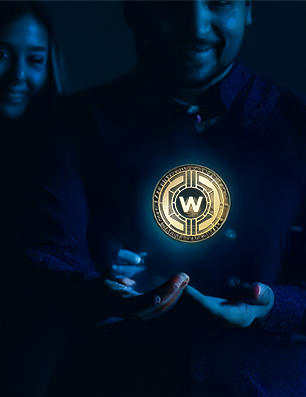- Written by: Brady Tinnin
- Wed, 02 Feb 2022
- Russian Federation
The new Solana Pay feature could usher in stablecoin adoption that finally breaches the barriers between traditional finance and DeFi. Covered: Solana Pay Arrives On Phantom Wallet How The Feds Are Feeling About Stablecoins Today is a bleak day for PayPal and traditional financial payment providers. After an abysmal Q4 earnings report, the payment giant’s […] The post Solana Pay Is Getting The Crypto World Excited. Here’s Why. appeared first on CryptosRus.
Solana Pay Is Getting The Crypto World Excited. Here’s Why.
The new Solana Pay feature could usher in stablecoin adoption that finally breaches the barriers between traditional finance and DeFi.
Covered:
- Solana Pay Arrives On Phantom Wallet
- How The Feds Are Feeling About Stablecoins
Today is a bleak day for PayPal and traditional financial payment providers. After an abysmal Q4 earnings report, the payment giant’s stock price tanked more than 25% since opening. Although PayPal’s growth might be slowing down, new decentralized payment solutions like Solana Pay are conveniently landing to capture users from TradFi payment solutions.
recommended: SOLANA FOUNDER SAYS METAVERSE CAN WIPE OUT BROKEN BUSINESS MODELS
Solana Pay Arrives On Phantom Wallet
#SolanaPay in action ??https://t.co/9i0DLQCiU4 https://t.co/t4KS8TItqN
— Solana (@solana) February 2, 2022
Solana and USDC stablecoin provider Circle have been making quiet moves behind the scenes that could cause an uproar in the near future. Solana and Phantom Wallet just introduced Solana Pay, enabling Phantom users to seamlessly transact with USDC stablecoins through the Phantom Wallet app.
1 – Solana Pay is already available on Phantom for iPhone! Just tap the icon in the top right of your home screen to scan a Solana Pay QR code.
Lightning fast, decentralized, secure payments with fees so low you can't believe your eyes? Yes please! https://t.co/wwuTGh9vGO
— Phantom (@phantom) February 1, 2022
From the announcement:
“Merchants have long sought an opportunity to leverage deep engagement with their customers, but multiple intermediaries involved in e-commerce or brick-and-mortar transactions makes that difficult. The next phase of development of the protocol will enable merchants to send digital assets back to the consumers, which will open up new capabilities in commerce not possible before.
It’s also important to note that this is bigger than enabling consumers to “pay with crypto.” Rather, this is about a vision where all currencies – including U.S. dollars – are on-chain and used for a wide range of transactions. Merchants have been able to accept cryptocurrencies for years. Still, acceptance usually means settling in non-stable currencies, swapping out one intermediary for another, and duct-taping square pegs and round holes together. It doesn’t need to be like this.”
Now, this is quite interesting for a multitude of reasons. As pointed out, this is about enabling dollars to be transacted on the blockchain, which has been a primary desire of crypto natives for a long time now. This integration breaks down the barriers between traditional financial institutions and decentralized protocols; by being able to transact with USDC or any stablecoin for that matter, you can store and use money from your DeFi account like a traditional bank yet at the same time participate in the multitude of yield platforms offered by DeFi. This is a win-win for both merchants and consumers alike.
— amilz (@a_milz) February 2, 2022
It’s also worth noting that Phantom Wallet has been growing at breakneck speed since 2021. As reported by Blockworks at the end of Q4, Phantom Wallet’s user base grew from just 40,000 users in July 2021 to over 1.8 million users as of December 2021. That’s a 4,400% increase in just half of a year. Shopify stores are even reportedly activating Solana pay online already.
damn. did bank of america actually get it right? https://t.co/9dXr3mDEHA
— ¢?? (@whydowebuy) February 2, 2022
Solana Pay: How The Feds Are Feeling About Stablecoins
The timing of Solana Pay amid the PayPal stock downturn all falls beautifully into place on top of the Federal Reserve’s recent 26-page report on the current stablecoin market.
It’s clear from the document that the Fed has certainly been doing its homework on stablecoins and has no intentions of outright banning them. In stark contrast, it would appear that the Fed sees immense opportunity in stablecoins and the crypto economy in general. Here’s one of my favorite paragraphs:
It’s also worth noting that beyond reserve-backed stablecoins such as USDC, the Fed is also paying attention to decentralized and algorithmically-backed stablecoins like TerraUSD (UST). However, they clarify that they are primarily focused on reserve-backed stablecoins, as they are “most closely tied to the existing banking system.”
2022 will be a big year for stablecoin regulation throughout the world. With the most recent integration of Solana Pay, we’re seeing a prime example of what decentralizing our payment solutions could mean for consumers. With the broad market acceptance of stablecoins like USDC, people can take their money out of traditional financial institutions offering offensively low yield rates and opt into a more inclusive financial system that prioritizes protecting consumers’ wealth.
Well this is awkward#Paypal #SolanaPay pic.twitter.com/Bbi6VFpiQI
— Goomba (@im_goomba) February 1, 2022
The post Solana Pay Is Getting The Crypto World Excited. Here’s Why. appeared first on CryptosRus.






